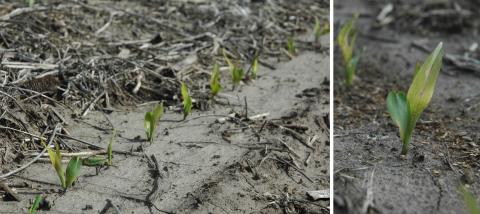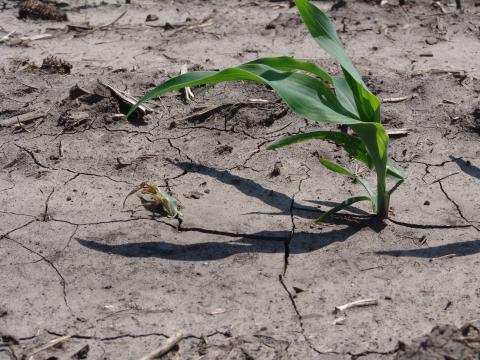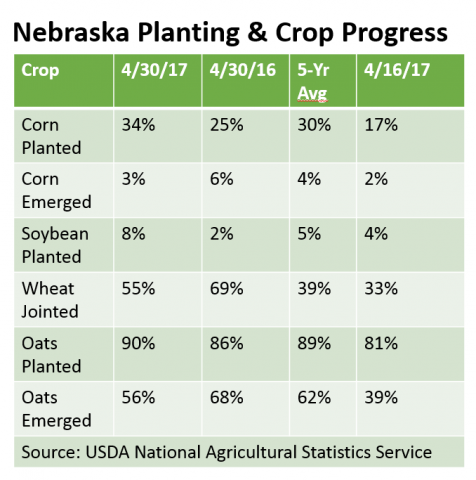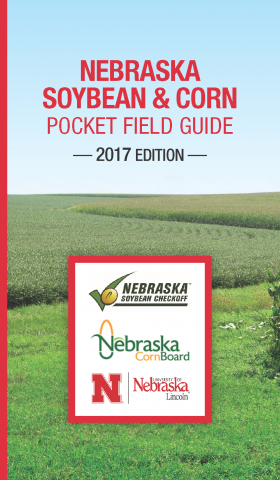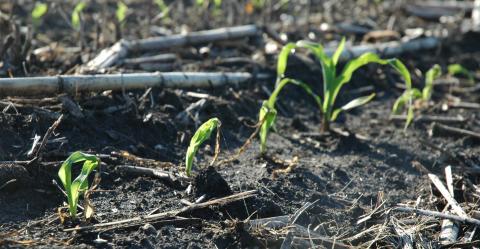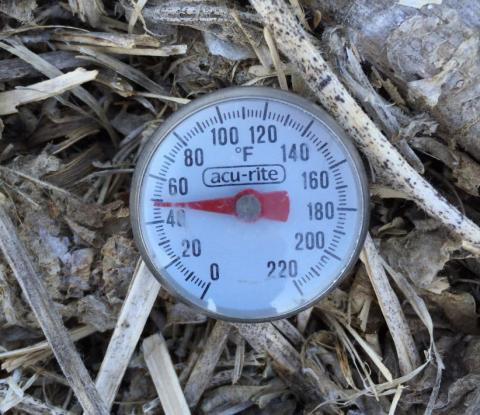Hindsight of 2016 Corn Yield Forecasts by the Yield Forecasting Center
May 11, 2017
Here we provide an evaluation of the corn yield forecasts released during the 2016 crop season by the Yield Forecast Center. We compared our end-of-season forecasted yield potential against the average corn yields reported by USDA NASS for rainfed and irrigated production.
Do I Need to Replant My Corn?
May 5, 2017
Considering whether your corn should be replanted? The authors look at types of plant damage at early growth stages and the effect on potential yield. It includes a table of relative yield potential of corn by planting date and population.
Recent Cold, Wet Conditions are Favorable for Seedling Diseases in Early Planted Corn
May 5, 2017
Recent cold, wet field conditions and fluctuations in soil temperatures have put early planted corn at risk for seedling disease development. Cold soil temperatures and episodes of recent rainfall (and snow) are especially favorable for some of the most common and damaging seedling diseases favored by cold wet conditions.
USDA NASS: Corn Planting at 34%, Soybean at 8%
May 1, 2017
Despite rainy cold conditions that moved in mid week, corn planting moved to 34% complete as of Sunday April 30, according to the USDA National Agricultural Statistics Services weekly Crop Progress and Condition Report. Eight percent of the soybean crop had been planted. For the week ending April 30, temperatures averaged eight to ten degrees below normal, according to the report. Significant rainfall of one inch or more was recorded across most counties. Moderate snow, averaging two to four inches, was recorded in south central and northeastern counties at the end of the week.
New Pocket Field Guide for Nebraska Soybean and Corn Growers
April 28, 2017
Nebraska farmers now have a new field resource to aid in identifying plant and pest problems in their soybean and corn fields. The Nebraska Soybean and Corn Pocket Field Guide provides information and photos to help farmers identify problems they may encounter during the growing season. The 380-page pocket-sized production guide was produced by a team of University of Nebraska researchers and Extension faculty, and funded by the Nebraska Soybean Board (NSB), Nebraska Corn Board (NCB), and the United Soybean Board (USB). Editors were Jim Specht, soybean physiologist/geneticist and University of Nebraska professor emeritus, and Tom Hoegemeyer, corn breeder and UNL adjunct professor of practice.
Risk of Freeze Damage in Early-Planted, Emerged Corn
April 28, 2017
Early-season freeze damage results in a range of potential yield impacts. Severe damage is often limited to low-lying areas within a field because cool air is heavier than warm air. Early season survival of corn plants is attributed to growing-point protection below the soil surface; however, a hard frost can penetrate the ground and kill plants. Regrowth of corn following freeze damage is often impeded by dead leaf tissue that can entrap new leaves.
Above Normal Temps Lead to Jump in Corn Planting Progress
April 25, 2017
With temperatures averaging two to four degrees above normal for the week ending April 23, corn planting was well underway and soybean planting had started in Nebraska, according to USDA’s National Agricultural Statistics Service.
Corn, Soybean Planting Considerations for this Week’s Cold Snap
April 24, 2017
With nighttime lows predicted to drop several nights this week, growers are advised to cautiously assess the potential for germination problems due to imbibitional chilling before planting. Agronomists advise checking soil temperatures in each field the day of planting as well as forecast temperatures for 24 hours (soybeans) or 48 hours (corn) after planting.

